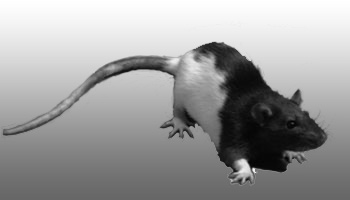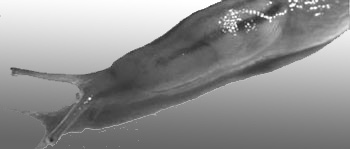Member
木村哲也 (室長): Tetsuya Kimura, PhD.
鈴木真美子 (流動研究員): Mamiko Suzuki, PhD.
About Us
One of the most common symptoms or signs of Alzheimer's disease (AD) is memory loss, especially forgetting
recently learned information. From this, it can be simply hypothesized that AD is a disorder relating to
memory functions. Some theoretical brain scientists have pointed out that plastic change of synaptic efficacy
in neurons mediates memory functions. Now, we are able to show many of evidential facts for the ‘synaptic
plasticity’ hypothesis for memory functions.
On the other hand, it is well known that AD brains are characterized by two anatomical hallmarks, called 'plaques' and 'tangles'.
Plaques are deposits of a protein fragment called 'beta-amyloid'. Tangles are formed by twisted fibers of another protein
called 'tau', which build up inside neurons. Though most people develop some plaques and tangles as they age,
those with AD tend to develop far more. We do not know exactly why those structures form in aged brains,
what beta-amyloid and tau do in memory functions, and how changes of molecular states of the key proteins contribute formation of dementia in AD.
To solve those questions, we have investigated tau’s function on synaptic plasticity, and are trying to show how
the identified function of tau influents formation of tangles and dementia in aged brains.
Recently, we have reported that tau plays a critical role in one form of synaptic plasticity,
long-term depression (Kimura et al. 2013). It has been already reported that over-expression of wild tau
reduces synapses in aged brain (Kimura et al. 2007, 2010). Those observations suggest that change of tau's
molecular state relating to aging directly influences on synaptic dysfunction in dementia.
Additional to the pathophysiological approach, we are developing Mn enhanced MRI technique as a tool for
brain activity imaging during behavior (for example, Kimura et al.2007, Perets et al. 2013). The technique is useful for analysis of genetical or chemical treatment
in small animals such as mice.
Recent Papers
| ○Sotiropoulos I, et al. (2014) Female hippocampus vulnerability to environmental stress as precipitating factor in tau aggregation pathology. Journal of Alzheimer's Disease 43(3): in press (doi:10.3233/JAD-140693) |
|---|
| ○Sato C, et al. (2014) Contribution of nucleus accumbens core (AcbC) to behavior control during a learned resting period: introduction of a novel task and lesion experiments. PLoS ONE 9(4): e95941. (doi:10.1371/journal.pone.0095941) |
| ○Umeda T, et al. (2014) Neurofibrillary tangle formation by introducing wild-type human tau into APP transgenic mice, Acta Neuropathologica, 127(5):685-698 (doi: 10.1007/s00401-014-1259-1) |
| ○Kimura T, et al. (2013) Microtubule associated protein tau is essential for long-term depression in the hippocampus, Philosophical Transactions of the Royal Society B, 369:20130144 |
| ○Umeda T, et al. (2013) Neurodegenerative disorder FTDP-17 related tau intron 10 +16C→T mutation increases tau exon 10 splicing and causes tauopathy in transgenic mice. American Journal of Pathology 183(1):211-225 |
| ○Peretz PD, et al. (2013) In vivo functional brain mapping in a conditional mouse model of human tauopathy (tauP301L) reveals reduced neural activity in memory formation structures. Molecular Neurodegeneration 8(1):9 |
| ○Yoshiike Y, et al. (2012) Adaptive responses to alloxan-induced mild oxidative stress ameliorates certain tauopathy phenotypes, Aging Cell, 11(1):51-62 |
| ○Kambe T, et al. (2011) Differential regional distribution of phosphorylated tau and synapse loss in the nucleus accumbens in tauopathy model mice. Neurobiology of Disease 42:404-414 |
| ○Suzuki M, Kimura T, et al. (2011) Chromatophore activity during natural pattern expression by the squid Sepioteuthis lessoniana: contributions of oscillation. PloS ONE 6(4): e18244 |
| ○Kimura T, et al. (2010) Aggregation of detergent-insoluble tau is involved in neuronal loss but not in synaptic loss. Journal of Biological Chemistry 285(49):38692-38699 |
| ○Sekiguchi T, Furudate H, Kimura T (2010) Internal representation and memory formation of odor preference based on oscillatory activities in a terrestrial slug. Learning & Memory 17(8): 372-380 |
| ○Suzuki M, Kimura T, et al. (2009) FMRFamide elicits chromatophore expansion and retraction depending on its type and development in the squid, Sepioteuthis lessoniana. Invertebrate Neuroscience 9(3-4): 185-193 |
| ○Kitamura N, et al (2009) Beneficial effects of estrogen in a mouse model of cerebrovascular insufficiency. PloS ONE 4(4): e5159 |
| ○Kimura T, et al. (2008) GSK-3β is required for memory reconsolidation in adult brain. PloS ONE 3(10): e3540 |
| ○Yoshiike Y, et al. (2008) Amyloid oligomer conformation in a group of natively folded proteins. PLoS ONE 3(9): e3235 |
| ○Yoshiike Y, Kimura T, et al. (2008) GABAA receptor-mediated acceleration of aging-associated memory decline in APP/PS1 mice and its pharmacological treatment by picrotoxin. PLoS ONE 3(8): e3029 |
| ○Kimura T, et al. (2007) Hyperphosphorylated tau in parahippocampal cortex impairs place learning in aged mice expressing wild-type human tau. EMBOJ 26(24): 5143-5152 |
| ○Tanemura T et al. (2006) Formation of tau inclusions in knock-in mice with familial Alzheimer disease (FAD) mutation of presenilin 1 (PS1). Journal of Biological Chemistry 281(8): 5037-5041 |







これまでにお世話になった動物達の一部です。
Links
Contact
Tetsuya Kimura
7-430 Morioka-cho Obu, Aichi,474-8511, Japan
Center for development of advanced medicine for dementia (CAMD),
National Center for Geriatrics and Gerontology
Access(→map)

